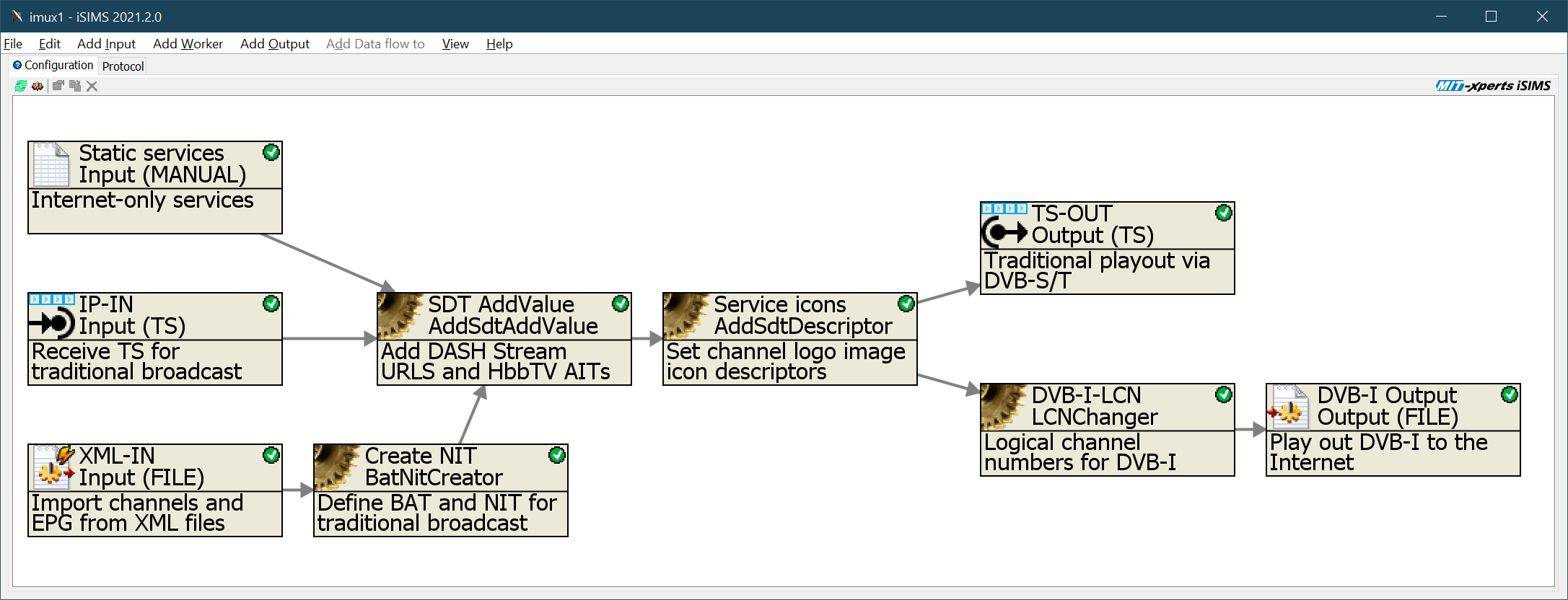
Johannes Schmid (MIT-xperts GmbH)
DVB-I opens the door for bringing broadcast services to the internet in a standardized way, but it is more than that: it allows broadcasters to ‘embrace and extend’ IP-based streaming.
Converting existing channels
Usually, the first step for a broadcaster is to bring the current DVB-S/C/T-based services to DVB-I. It is important to understand that DVB-I is not internet-only: it serves as the bridge between both worlds. In this first step, you can use DVB-I to provide a standardized list of your traditional broadcast channels via the internet. In this case, DVB-I provides all necessary information to find those channels in the broadcast world, something like the NIT (Network Information Table) in traditional DVB systems.
As ARD, the largest public broadcaster in Germany, already uses the MIT-xperts iSIMS SI/PSI server for its broadcast-related service information, this transition was the next logical step. Using the latest version, you can easily export all your DVB services to DVB-I and publish them on the internet. The iSIMS server converts the broadcast data, such as the NIT, SDT (Service Description Table) and EIT (Event Information Table, containing the electronic programme guide), to DVB-I and automatically keeps both worlds in sync.
Translating your existing data to DVB is only the first step. Your DVB-I audience now knows about your channels and what is currently running on those channels, but without a traditional receiver, they cannot watch them.
The next step is to get your internet livestreams up and running. Thanks to the broad usage of HbbTV interactive TV throughout the ARD, we already had DVB-DASH livestreams in place. For DVB-I, you only need to assign a livestream URL to each channel. Adding a channel logo to each of your services at the same time really improves the look of your EPG and channel list.

Typical data flow for processing DVB content, enriching it, and converting it to DVB-I
The next step is to enrich your EPG with images too. Luckily ARD already has images for most of its EPG entries, intended for print media and various internet- based EPGs, so it was an easy task to also bring those images to the SI/PSI server, which converts them to DVB-I. Traditional broadcast services can also benefit from this: as your SI/PSI server now knows about channel logos and images for the EPG, you can play out this information via DVB-S/C/T too. This allows connected devices from the traditional broadcasting world to display this new information, bringing both worlds even closer together.
Finally, you can now bring your interactive TV content, including video-on-demand apps, to DVB-I. In Germany, we are big supporters of HbbTV, the standard for HTML-based interactive TV. All you need to do is to convert your existing AIT (Application Information Table) to an XML-based AIT and publish it via DVB-I, a task the iSIMS SI/ PSI server can handle. With this final step, your transition to DVB-I is complete.
A new era
Beyond this, DVB-I opens entirely new possibilities to extend your reach: internet-only channels with live streams and video-on- demand content; visual radio, enriched with news, traffic information, the current playlist, etc.; or event channels for soccer matches, concerts, and any other content you have available. You can also now think about personalization services, like genre-based channels or tailored mixes of live and on-demand content based on individual user feedback.
DVB-I opens a new era for broadcasters bringing their content to the internet. It allows more personalization and more freedom for the individual user while still staying with a trusted broadcast brand (like ARD in Germany). The broadcaster stays in control of all its metadata and is able to broadcast dynamic channel lists.
This article was first published in issue 50 of tech-i magazine.
